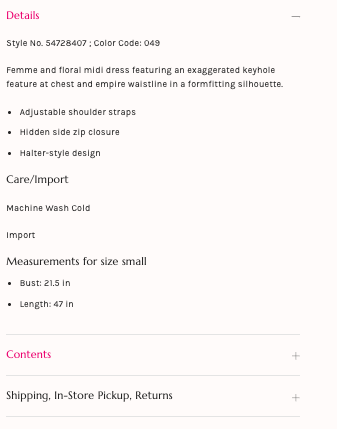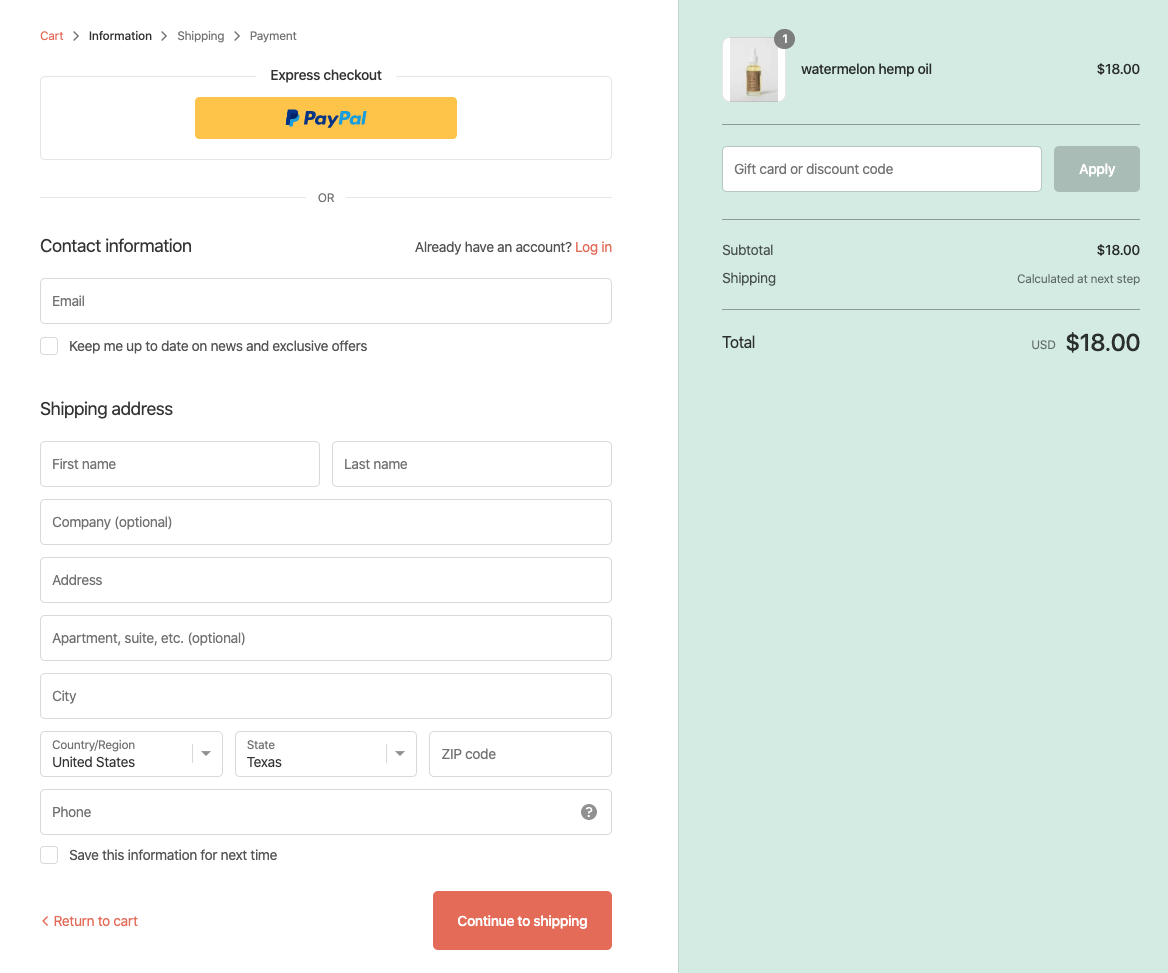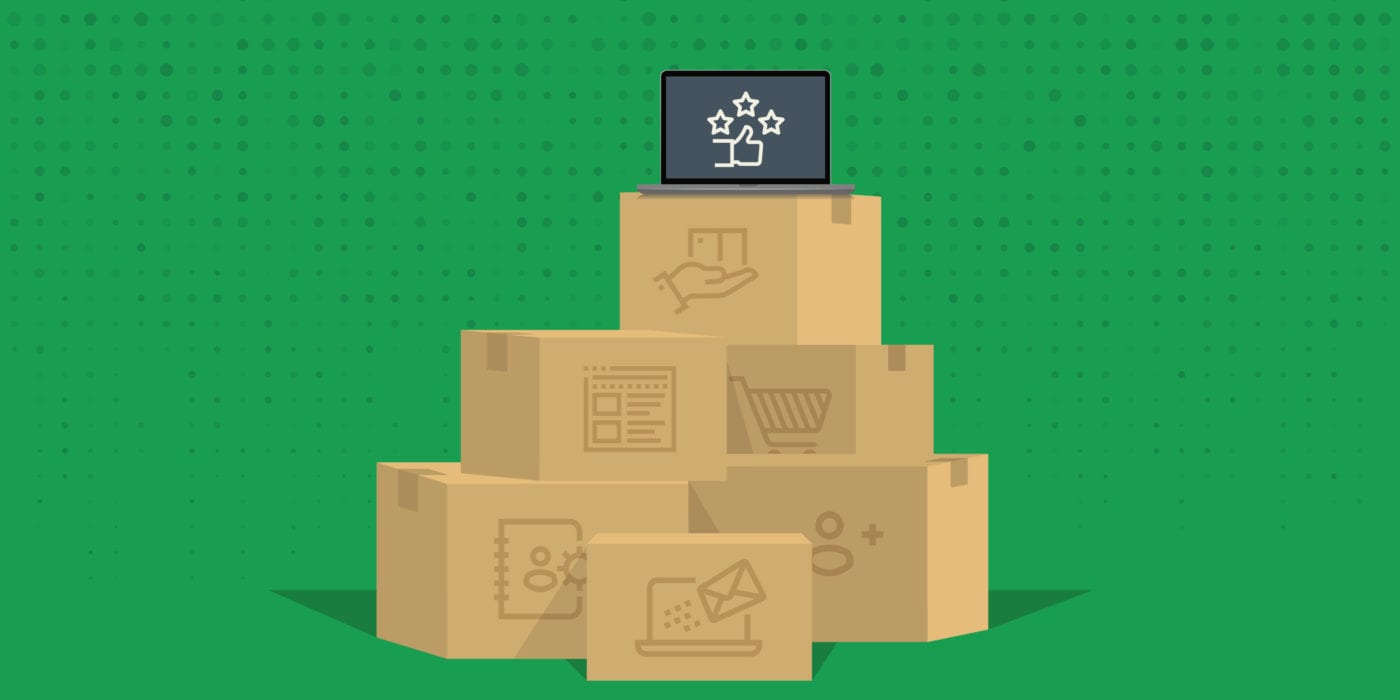In November, we wrote a blog about Shopify tips and tricks to guide you through all it offers and how it can be used to increase sales. However, there’s a lot more to selling products or services online than just setting up an e-commerce store. You need to have an e-commerce strategy in place in order to attract, engage, and delight customers
The goal of your e-commerce campaign shouldn’t just be to close sales, it should be to give your customers an online shopping experience that increases customer loyalty and creates future brand ambassadors.
E-Commerce Strategy Tips
With that in mind, the following are a few e-commerce tips for building a successful marketing plan for your online store.
1. Establish Your E-commerce Goals
The first step to your e-commerce strategy is to establish a set of goals. Whether your goal is to attract a certain number of customers or generate a certain amount of revenue within a specific time period, you’ll be able to judge the performance of your online store and the efforts of your e-commerce campaign with the set goals in place. Be sure to measure your goals against industry standards and set quantitative benchmarks.
A good starting place would be to set objectives and key results. Objectives describe the goal while key results are the steps you take to get there. Below is an example:
Objective Examples:
- Become a well-known and loved workout clothes company comparable to a brand like Lululemon.
Key Results:
- Attract x amount of qualified customers to our online store each quarter
- Build a loyal fan base
- Delight customers with friendly, helpful and responsive customer service
- Create a relatable and authentic social media presence to connect with target audience
Use this as your framework for setting up and promoting your online store. What steps do you need to take to accomplish these key results? This is a great way to set your priorities and align your e-commerce strategy with your entire team.
2. Develop Your Buyer Personas
Knowing who your target audience is will be critical to the success of your e-commerce strategy.
Take some time to identify your target audience by developing your buyer personas. Buyer personas are representations of your “perfect” customer that you can use to more effectively target potential customers. They’re basically fictional characters created to develop real customers to help you focus your efforts. They’re also a reflection of your company’s goals and ideals
Building out personas will help guide your marketing strategy while establishing the voice and tone for your online store. Marketing to the wrong audience will hurt your ability to generate sales, as well as waste your time and money.
You can start building your buyer personas by asking yourself the following questions:
- How well does this buyer know my product?
- What types of media do they consume?
- Are they using your products to solve problems?
- Does your product impact their overall life?
- What items are you better positioned to do than your competitors?
- Who influences their buying decisions?
- What communication channels do they prefer?
3. Identify Your Unique Value Proposition
Online customers tend to do a lot of research before making the decision to purchase. This means that they will likely be comparing the products or services that you offer to those of your competitors.
Identify what your brand’s unique value proposition is and make it clear to your potential customers. The value proposition answers a crucial question that every e-commerce customer is asking: “Why should I buy from you instead of your competitors?”
It details out how you solve customer pain-points and how you improve their experience by adding value. It can refer to specific benefits like how your product is eco-friendly, cost-effective, incorporates fast shipping, or is easier and more convenient.
Make sure to keep buyer personas’ pain points, wants and needs in mind when determining your value proposition.
4. Create Effective Product or Service Descriptions
Write detailed descriptions of the products or services you’re selling on your e-commerce page. These descriptions should highlight the benefits and features of your products/services and should be easy for customers to read. Equip your customers with as much information as possible.

It is also crucial to include high-quality photographs along with your descriptions. The visuals can make or break a sale. Make sure to include multiple photos from different viewpoints to help your customers better understand your product. The design should be viewable and easily maneuverable via any device (i.e. laptop, iPhone, tablet, etc.)
Don’t forget to optimize your e-commerce store for SEO. Optimize your pages for short, product-driven keywords that include the name of the product. Make sure your page titles, headers, and image alt text focus on the targeted keywords, so search engines know to show your e-commerce store for the right query.
5. Delight Your Customers
There are so many different ways to delight your customers and build brand ambassadors. Think of features that will make your customers’ shopping experience as pleasant as possible. For example: offer free shipping, 15% off of their first order, express shipping on orders over $100, personalization on packaging, etc.
Expensive shipping is the primary reason shoppers abandon their carts. Offering free shipping on orders more than X amount will encourage customers to buy more of your products and make them feel like they are getting more value out of their purchase.

Chatbots are a good feature that you can pre-program to answer basic questions and provide basic information. Customers who have questions about a product or service can rely on your chatbot to answer their inquiries right away and when they’re in the checkout process.
6. Optimize the Checkout Process
Optimize your checkout process to be as smooth of an experience as possible. A poorly implemented checkout process can lead to a high cart abandonment rate.
Make sure that it’s easy to navigate! Offer an automatic sign-in option using social media for a more convenient experience, and don’t require multiple pages of forms to be filled out. Allow customers to see what is in their cart and make it easy for them to make last-minute changes.
Here are some other ways to mitigate shopping cart abandonment:
- Provide a money-back guarantee
- Implement a clear and simple return policy
- Offer different delivery options
- Include easy access to customer support

7. Identify Upselling and Cross-Selling Opportunities
“Upselling is a sales technique used to get a customer to spend more by buying an upgraded or premium version of what’s being purchased.”
An example of upselling is when an airline offers you the cheapest flight options but also presents you with the more expensive flight options with the additional features. (see example below)

It is a good idea to show side-by-side comparisons, so the customer can compare the features and the value of the more premium option.
Alternatively, “cross-selling is a sales technique used to get a customer to spend more by purchasing a product that’s related to what’s already being bought.” Amazon reportedly attributes up to 35% of its sales to this technique.
Example of cross-selling:
- “Customers who bought this item also bought this”
- “Frequently bought together”
- “Related items”


You can use this technique on the actual checkout pages, as well as within the follow-up emails. This is a good way to increase revenue while improving your customer’s experience.
8. Run Retargeting and Remarketing Campaigns
Many of the people who visit your online store will not make a purchase the first time they visit. In fact, 79% of people abandon their shopping carts while online shopping.
Run retargeting ads on other websites or on social media channels to showcase the products or services that they were previously looking at in order to recapture their attention and remind them of their interest.
Set up remarketing email or Google Ad campaigns to remind customers of the products they left behind in their cart. Offer discounts or promotions to encourage customers to take action. Customized ads and emails allow you to nurture and re-engage customers, resulting in an increase in conversions.
9. Optimize Your E-Commerce Site for Mobile Devices
The following stats from Pixel Union emphasize the importance of optimizing your site for mobile:
- By 2021, mobile e-commerce sales are expected to account for 54% of total e-commerce sales
- 70% of mobile searches lead to action within an hour
- 67% of consumers admit to “digital window shopping” for fun on their mobile devices, and 77% of those make impulse purchases when doing so
- Shopify reported that on Black Friday Cyber Monday weekend, 69% of sales were made on phones or tablets, while only 31% happened on desktops
To ensure your website visitors have the best experience possible, you must optimize your e-commerce site for mobile devices. Check out this post for some examples of successful responsive web design.
10. Establish Trust
Trust is absolutely essential in running an e-commerce store. After all, customers are providing you with sensitive information, so be sure to use HTTPS protocol to encrypt all data that’s transferred to and from your website.
Be very transparent about the costs of your products or services as well as shipping, tax expenses, and return/exchange policies. Add trust badges to your e-commerce pages, such as payment processor logos, SSL certificates, security badges, and third-party endorsements.
Also, implementing customer reviews on your website, social campaigns, emails, etc. can help mitigate that mistrust because they come from people who are not invested in the success of the company – instead, they’re authentic reviews of your product and how it worked for them (they do the selling and trust-building for you, yay!).
Ready, Set, Sell
If you want your e-commerce store to be successful, then you’ll need to implement an effective e-commerce marketing strategy. Do not expect to generate sales simply because you have an online store. By following these ten e-commerce tips you’ll be on track for a successful and authoritative online store that attracts customers.
Need help developing or launching an e-commerce marketing strategy? We are here to help! Contact us today to get started.
-FINAL(01-00)-White&Blue-01.svg)





